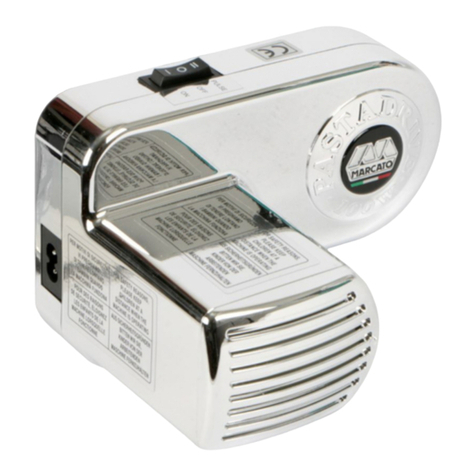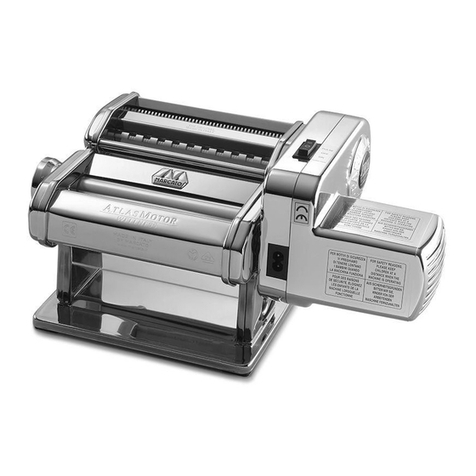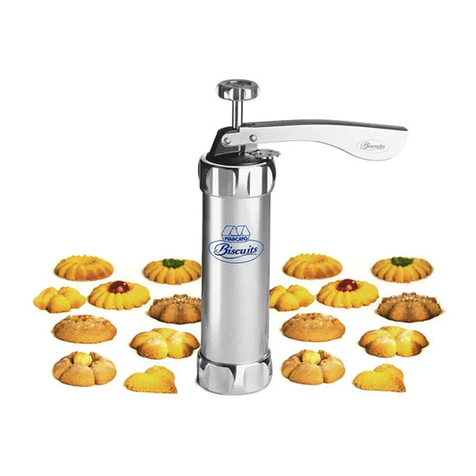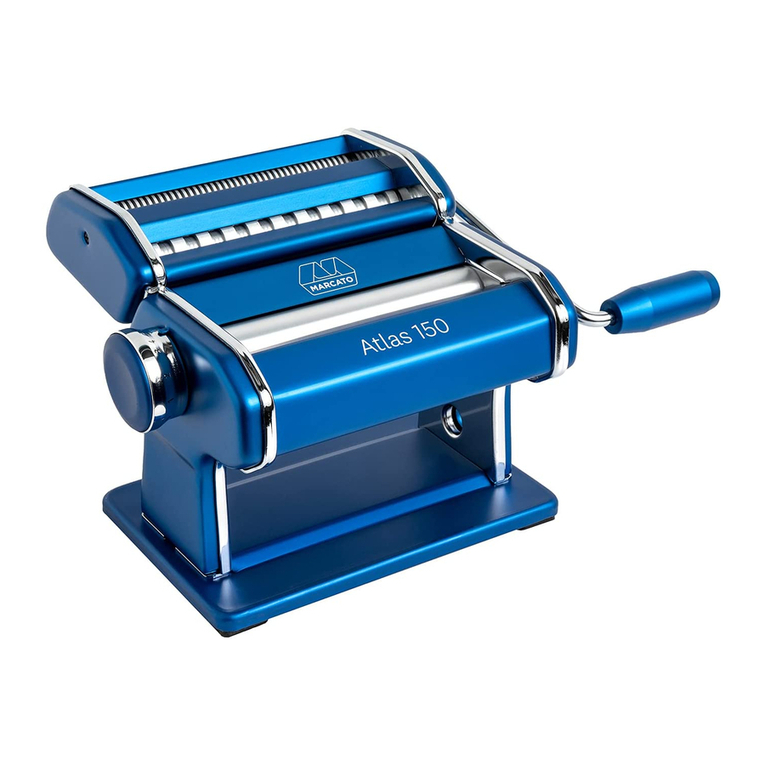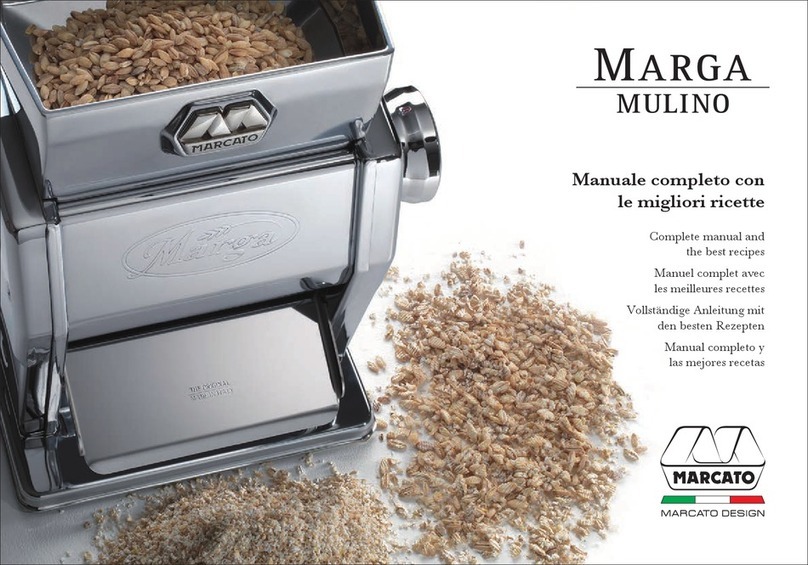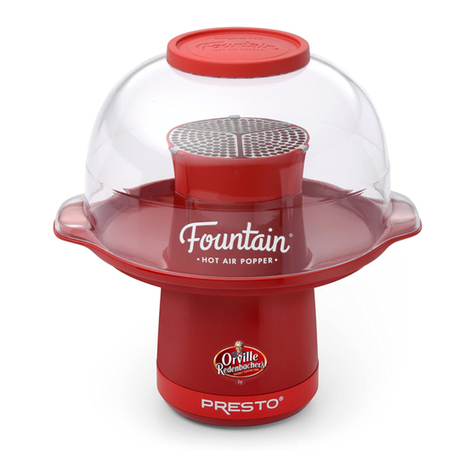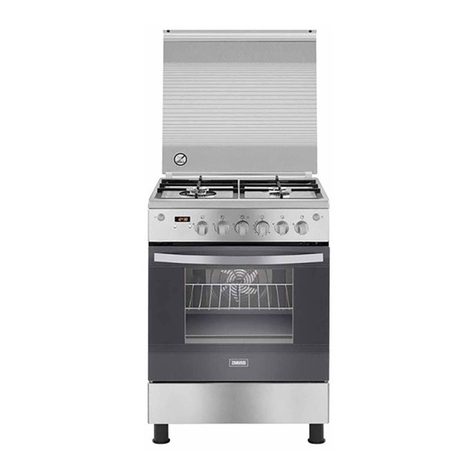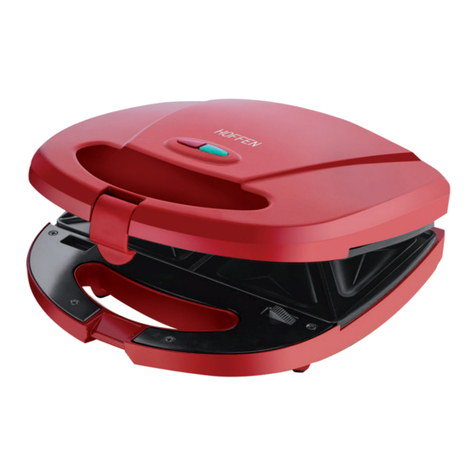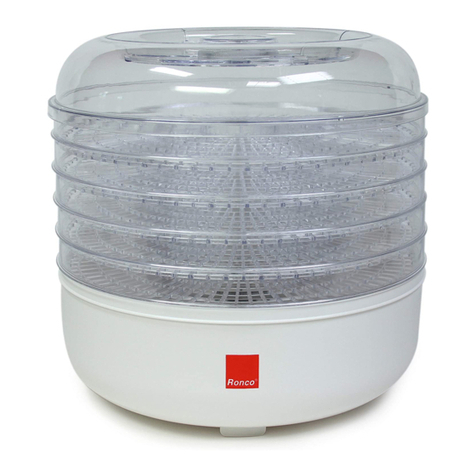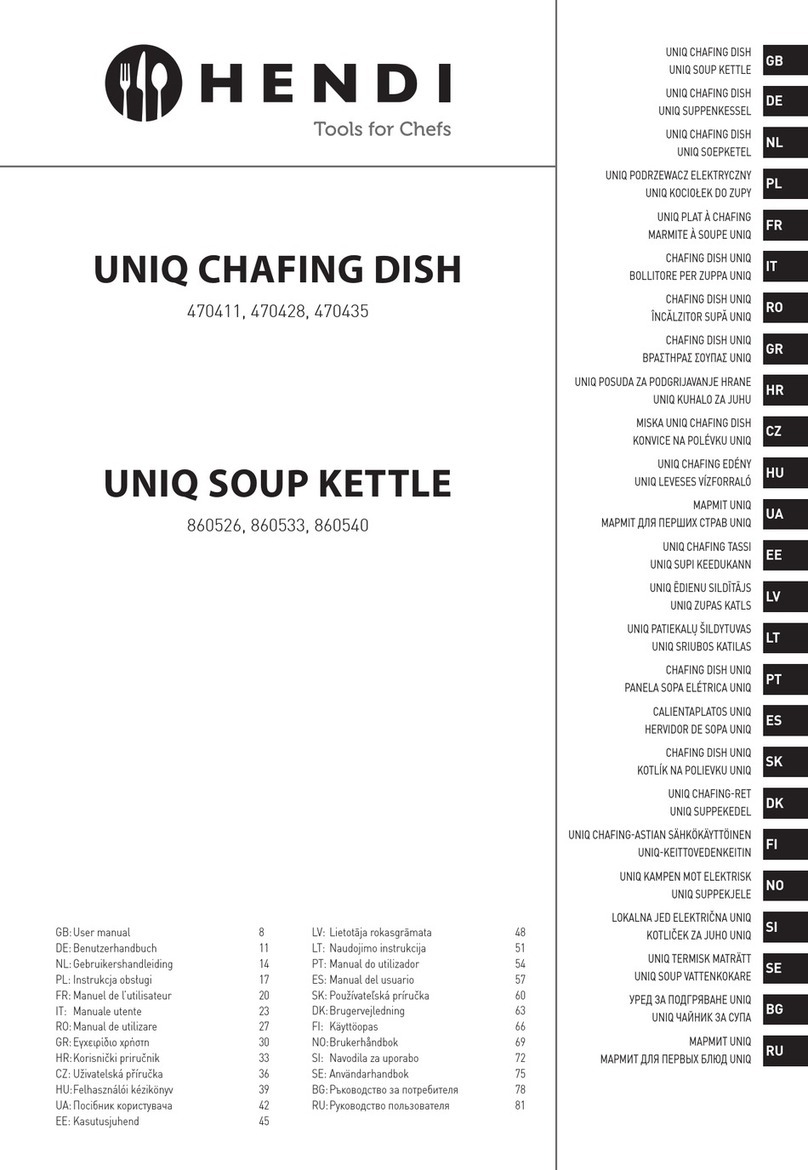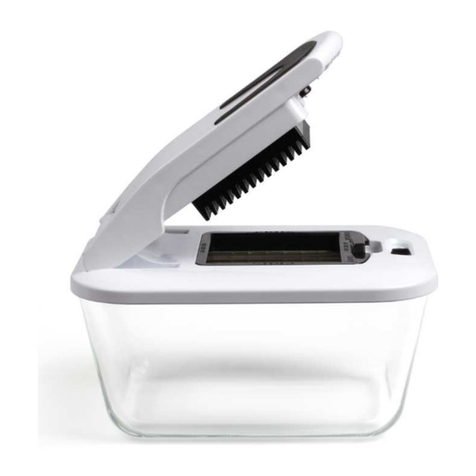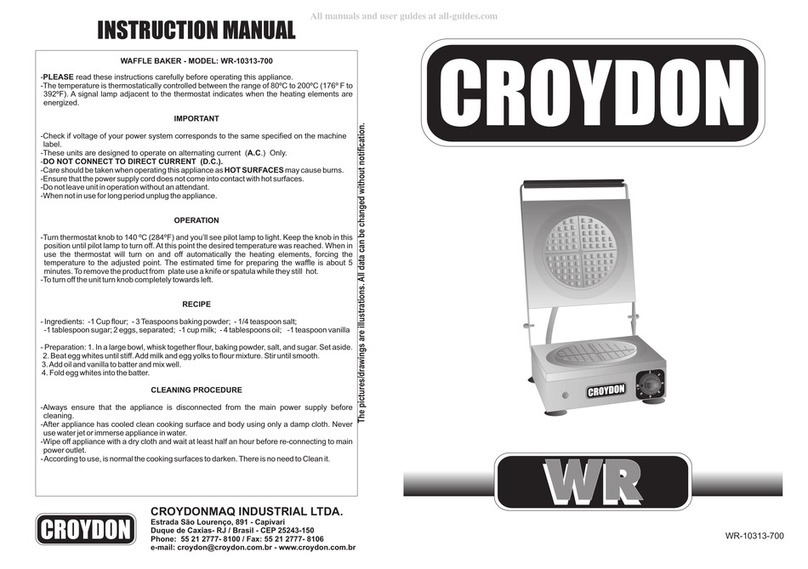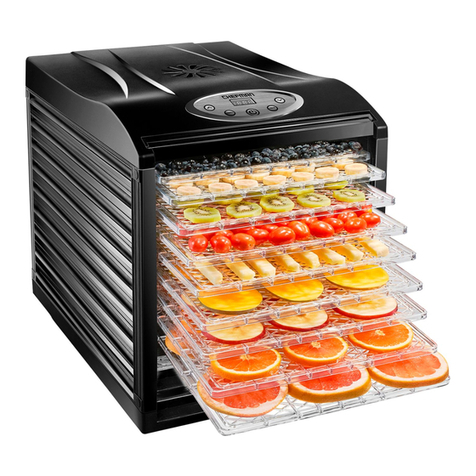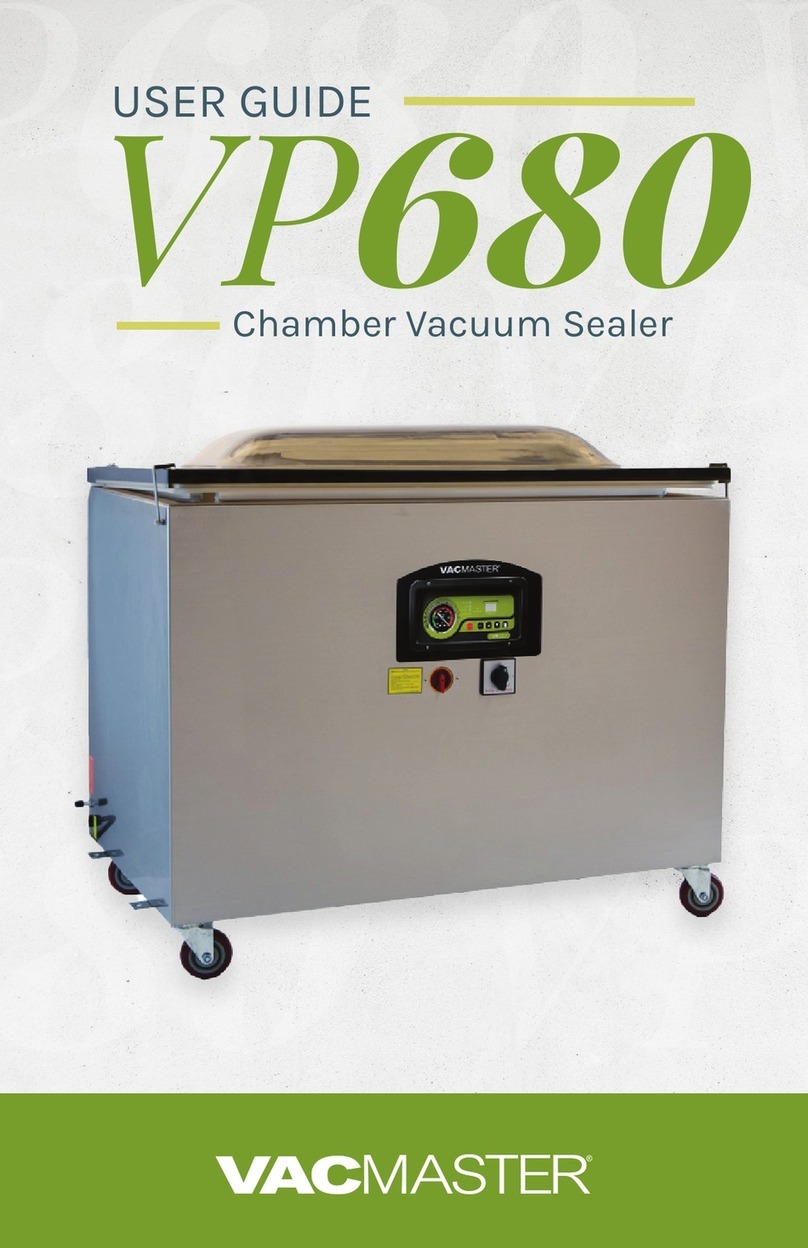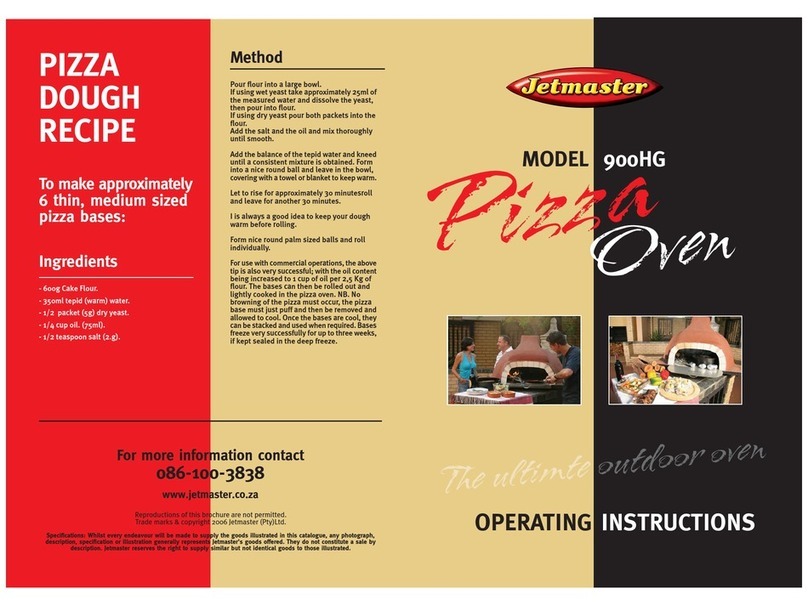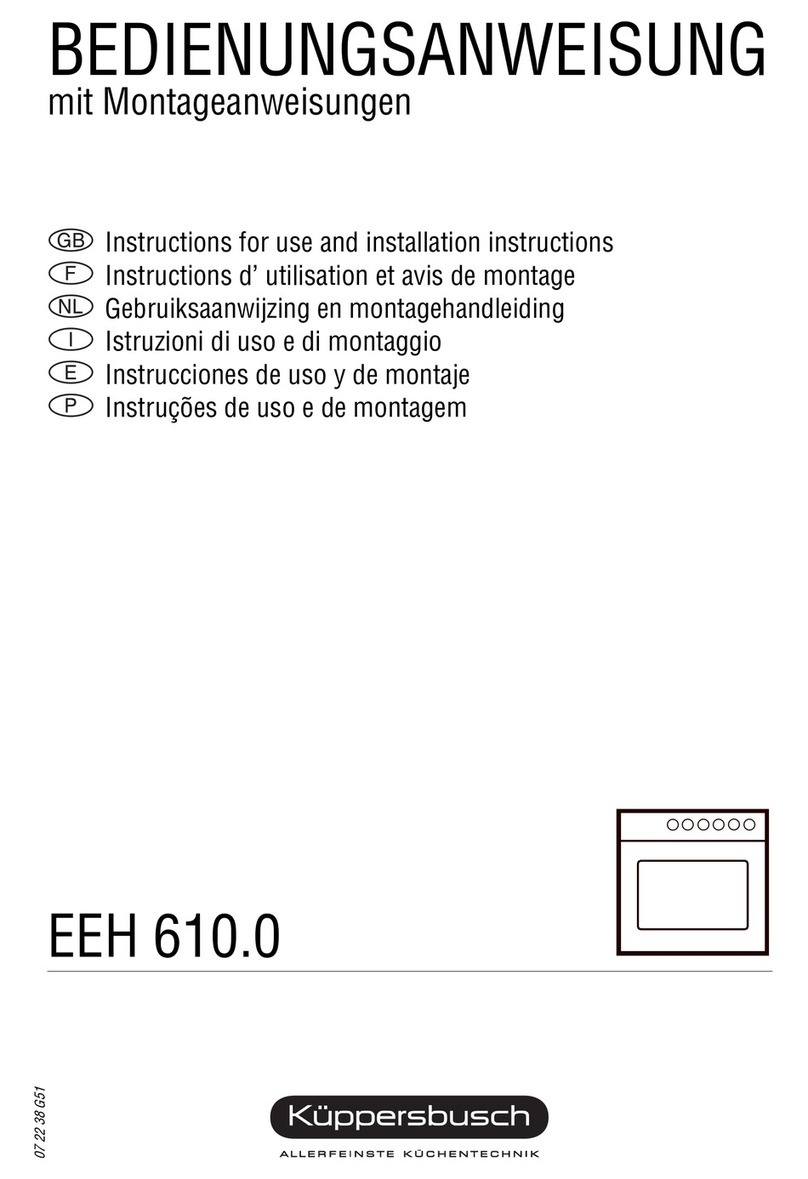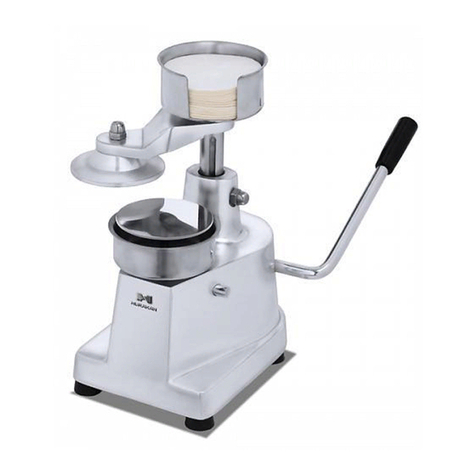
HOW TO MAKE SHEETS OF
PASTA AND PASTA
Set the machine thickness-adjustment knob on
number 0, pulling it outwards and making it
turn, so that the two smooth rollers are fully open
(Figure 2).
Feed a lump of dough through the rollers, turning
the crank clockwise as indicated by the arrow (Fig.
3). Lightly dust both sides of the sheet of pasta with
our and fold it in half. Feed the sheet of pasta
through the smooth rollers again: repeat these
operations 5-6 times until the sheet of pasta has a
long and regular shape.
Cut the sheet of pasta in two and lightly dust with
our on both sides.
Set the thickness-adjustment knob on no. 1 and
feed the sheet of pasta through once without folding
it; then set it on no. 2 and feed the sheet of pasta
through once again, then set it on no. 3 and so forth
until achieving the desired thickness (Fig. 4).
Now cut the sheet of pasta crosswise into pieces
about 25 cm (~ 10 inches) long and lightly dust
them with our again (Fig. 5).
Insert the crank into one of the holes of the cutting
rollers and while you make it turn in the direction
of the arrow, feed the sheet of pasta through to
achieve the desired type of pasta: fettuccine or
tagliolini (Fig. 6).
TIP: For fettuccine the recommended
thickness of the sheet of pasta is with the
thickness-adjustment knob on no. 5, for
tagliolini it should be on setting no. 7.
The thinnest pasta sheet thickness is
achieved by setting the machine on no. 7 and
feeding the sheet of pasta through twice.
NOTE 1: If the rollers are not able to “cut” it
means that the sheet of pasta is too soft: in this
case we recommend to knead the dough with your
hands, adding some our and feeding it through
ADJUSTMENT
KNOB
PASTA SHEET
THICKNESS
1
2
2
3
~ 4,8 mm
~ 3,9 mm
~ 3,2 mm
~ 2,5 mm
~ 1,6 mm
~ 0,9 mm
~ 1,6 mm
n. 1
n. 2
n. 3
n. 4
n. 5
n. 6
n. 7
